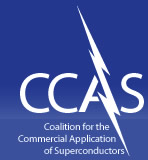Commercial Applications
- Properties, History and Challenges
- Overview
- Electric Power
- Transportation
- Medical Imaging and Diagnostics
- NMR for Medical and Materials Applications
- Industrial Processing
- High Energy Physics
- Wireless Communications
- Instrumentation, Sensors, Standards and Radar
- Large-Scale Computing
- Renewable Energy
- Cryogenics: An Enabling Technology
Applications in High-Energy Physics and Other Areas of Research
Superconductivity has played a key role throughout the past century in expanding the frontiers of human knowledge. Today, these materials continue to offer important new tools to expand our understanding of the natural world and potentially foster new energy technologies.
Discovering The Nature Of Matter And Energy
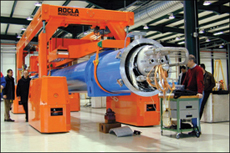 Scientists spent the last 50 years putting together what is called the Standard Model of particle physics. The Standard Model, which explains the basic interactions of fundamental
particles that make up everything we see, is the most complete physics theory in history, yet it leaves 95% of the mass in the universe unexplained!
Scientists spent the last 50 years putting together what is called the Standard Model of particle physics. The Standard Model, which explains the basic interactions of fundamental
particles that make up everything we see, is the most complete physics theory in history, yet it leaves 95% of the mass in the universe unexplained!
Particle physicists use accelerators to recreate the conditions of the early universe in an attempt to piece together the complex puzzle of how we got to where we are today. These huge machines are used to accelerate particles to very high energies where they are brought together in collisions, which generate particles that only existed a few moments after the Big Bang that created the universe almost 14 billion years ago.
The Large Hadron Collider, or LHC, is located near Geneva, Switzerland and began operation in September 2008. It is the largest and most powerful particle accelerator in the world, with a circumference of 27 kilometers. Protons with energies of up to 7 trillion electron volt are brought to collision inside giant detectors used to reconstruct the complex collisions needed to find new particles. This gargantuan “time machine and microscope” will generate conditions that existed approximately a billionth of a second after the Big Bang, and if nature is kind, will uncover phenomena never seen before. [1]
Superconductivity Required
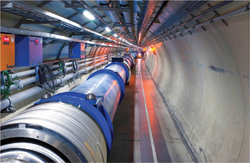 The storage rings in accelerators for the colliding protons are made of superconducting magnets, strung together like beads on a necklace. In the LHC, two
concentric rings are made up of thousands of superconducting magnets. The colliding energy required could not be economically achieved without superconducting magnets. The largest are
the main dipole magnets that steer the particles around the ring. These magnets contain over 1,200 tons of superconducting cable. Superconductivity also enables construction of giant magnets for the detectors at the LHC used to measure the properties of the particles produced in the collisions. [2]
The storage rings in accelerators for the colliding protons are made of superconducting magnets, strung together like beads on a necklace. In the LHC, two
concentric rings are made up of thousands of superconducting magnets. The colliding energy required could not be economically achieved without superconducting magnets. The largest are
the main dipole magnets that steer the particles around the ring. These magnets contain over 1,200 tons of superconducting cable. Superconductivity also enables construction of giant magnets for the detectors at the LHC used to measure the properties of the particles produced in the collisions. [2]
Fusion Energy
Bringing a star to earth
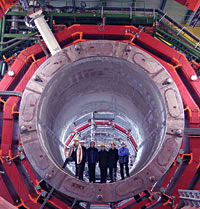 One of the biggest and potentially most significant scientific research projects now underway worldwide is the International Thermonuclear Experimental Reactor (ITER). This global project represents one of the biggest collaborations in energy research and is aimed at demonstrating the scientific and technological feasibility of producing fusion energy for peaceful purposes. ITER aims to provide the know-how to later
build the first electricity-generating power station based on magnetic confinement of high temperature plasma – in other words, to capture and use the power of the sun on earth. Superconductors play a critical enabling role in this important project by generating the high magnetic fields needed to confine and shape the high temperature plasma. [3]
One of the biggest and potentially most significant scientific research projects now underway worldwide is the International Thermonuclear Experimental Reactor (ITER). This global project represents one of the biggest collaborations in energy research and is aimed at demonstrating the scientific and technological feasibility of producing fusion energy for peaceful purposes. ITER aims to provide the know-how to later
build the first electricity-generating power station based on magnetic confinement of high temperature plasma – in other words, to capture and use the power of the sun on earth. Superconductors play a critical enabling role in this important project by generating the high magnetic fields needed to confine and shape the high temperature plasma. [3]
Superconductors play a critical enabling role in this important project by generating the high magnetic fields needed to confine and shape the high temperature plasma.
Space Exploration
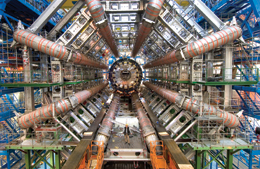 Superconductors are under development for a range of space-related applications. Space telescopes and other space-based instruments require absolute minimal power budgets, and the low-loss nature
of superconductors make them ideal in such applications. These applications include magnetic
actuators, magnetic refrigeration, magnetically assisted propulsion, superconducting magnets for radiation shielding and spaced based magnetic plasma confinement. [4]
Superconductors are under development for a range of space-related applications. Space telescopes and other space-based instruments require absolute minimal power budgets, and the low-loss nature
of superconductors make them ideal in such applications. These applications include magnetic
actuators, magnetic refrigeration, magnetically assisted propulsion, superconducting magnets for radiation shielding and spaced based magnetic plasma confinement. [4]
Issues and Recommendations
Such significant achievements can continue only with sustained support for the superconductor industry, including managing swings in demand that such large projects require, continuing research on new superconducting materials and maintaining a robust university infrastructure of programs in materials and device research.
- [1] One of the first LHC Magnets ready for testing Image courtesy of CERN, Geneva
- [2] Accelerator Magnets fully operational in the LHC Tunnel Image courtesy of CERN, Geneva
- [3] ATLAS Detector Magnet in an LHC Experiment - the largest operational superconducting magnet in the world Image Courtesy of ATLAS Collaboration, CERN, Geneva
- [4] The ITER reactor will use 800 tons of superconductors in more than 40 individual magnets sections. Image courtesy of ITER Organization, Cadarache, France
